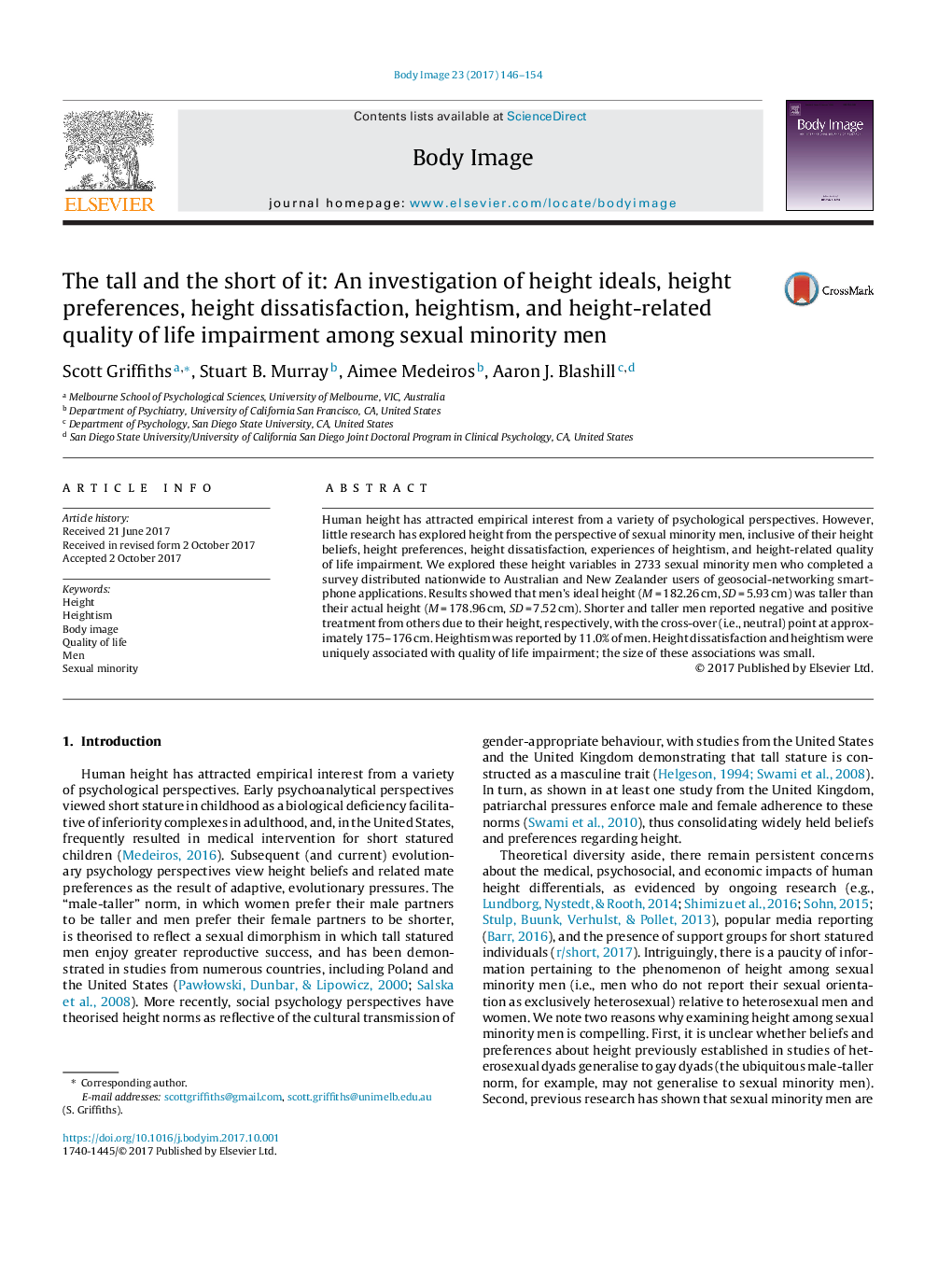| کد مقاله | کد نشریه | سال انتشار | مقاله انگلیسی | نسخه تمام متن |
|---|---|---|---|---|
| 5038359 | 1472807 | 2017 | 9 صفحه PDF | دانلود رایگان |
- Mean actual height (179Â cm) was shorter than mean ideal height (182Â cm).
- Height dissatisfaction increased as actual height decreased from 184Â cm to 162Â cm.
- Treatment from others due to height crossed from positive to negative at 175-176Â cm.
- Heightism was reported by 11.0% of participants (predominantly shorter men).
- Height dissatisfaction and heightism were associated with impaired quality of life.
Human height has attracted empirical interest from a variety of psychological perspectives. However, little research has explored height from the perspective of sexual minority men, inclusive of their height beliefs, height preferences, height dissatisfaction, experiences of heightism, and height-related quality of life impairment. We explored these height variables in 2733 sexual minority men who completed a survey distributed nationwide to Australian and New Zealander users of geosocial-networking smartphone applications. Results showed that men's ideal height (MÂ =Â 182.26Â cm, SDÂ =Â 5.93Â cm) was taller than their actual height (MÂ =Â 178.96Â cm, SDÂ =Â 7.52Â cm). Shorter and taller men reported negative and positive treatment from others due to their height, respectively, with the cross-over (i.e., neutral) point at approximately 175-176Â cm. Heightism was reported by 11.0% of men. Height dissatisfaction and heightism were uniquely associated with quality of life impairment; the size of these associations was small.
Journal: Body Image - Volume 23, December 2017, Pages 146-154
